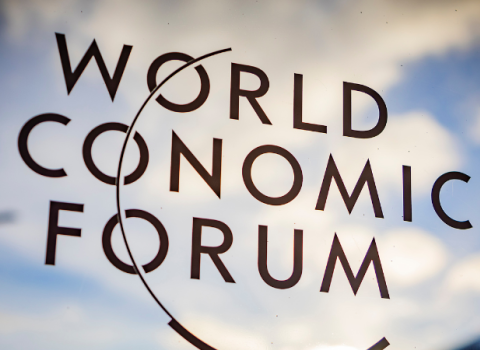An entire apparatus sprang into life to contain the virus on the island. Now the hope is that the infection can be controlled until there is a vaccine

Kari Stefánsson, founder and CEO of deCODE. Photo: deCODE.
Iceland is weathering the pandemic well - with 1,802 cases of the virus and 10 deaths - and appears better able than most to adjust to the new world that COVID-19 is creating.
The number of new COVID-19 cases each day has fallen from 106 at the peak of the outbreak to around one case every five days.
Iceland’s success is partly down to its tiny population of around 364,000. But early vigilance and action were also key.
Health officials rushed in to contain the spread, with the government building a team of contact tracers to interview those with a positive diagnosis and track down people they’d been in contact with. As a result, the country has not faced the large-scale and very strict lockdowns seen across Europe.
The government believes it has tested a higher percentage of the population than any other country, and despite worrisome reports of spikes in infections after reopening countries like China, South Korea and Germany, officials in Iceland are quietly confident that they can prevail against the virus.
Iceland’s flagship genomics company, deCODE genetics, has carried out over 80 per cent of all tests. “I’m convinced we’ll be able to live with this until there’s a vaccine. I’m more concerned about the economic damage,” said Kari Stefánsson, founder and CEO of deCODE, which has now administered 43,000 tests.
Backing up the high levels of testing, social distancing isn’t a big problem for Icelanders, who naturally do seclusion well, said Jón Atli Benediktsson, rector of the University of Iceland. “We are a fairly large island, with few people who mostly live far apart from one another, so it’s easier,” he said.
During the Icelandic lockdown, there was a ban on assembly. Conferences were cancelled. But universities remained open for staff and research students.
Now, kindergartens and elementary schools are back in action. Hairdressers, massage parlours, physiotherapy clinics, beauty parlours and museums are open again.
In the past week, the University of Iceland has reopened its reading rooms and computer rooms, with new social distance restrictions of two metres. Exams and graduation remain on schedule.
“We haven’t seen any new infections for over four days in a row now,” said Benediktsson. “Things are really looking up.”
Yet for all its success in taming the virus, the island has not escaped a crippling blow to the economy.
“This has been the worst situation in 100 years. We are worried about funding. Lots of people are losing their jobs. The uncertainty is there and we cannot be too optimistic in the short term,” said Benediktsson. The university is looking at offering courses during the summer to bring in extra money.
“We did the first bit very well. We relied on our scientists, and our health officials organised everything well. They calmed us, they answered all our questions, however silly,” said Þorgerður Katrín Gunnarsdóttir, chairwoman of the liberal Reform Party.
“But now we are facing economic stagnation – probably three to five years,” she said.
The moment evokes vivid memories for Gunnarsdóttir, who became the de facto leader of the government just after the Icelandic economic crash in 2008. “Back then, you could understand the anger of people. Now, you could say there’s no one to blame for this crash. We must remember that anger is not a good driver for anything.”
Energetic response
An “extremely energetic” government effort on tracing, testing and isolating explains Iceland’s early success against the virus, said Stefánsson. “This has been sort of seamless.”
“It’s amazing how compliant the nation was. There were not very draconian measures taken – some things closed and now things are lifting relatively quickly again,” he said.
DeCode, which is owned by the US biotech Amgen, has effectively been deputised by the health system as the main test provider on the island. The company isn’t being paid for any of this. “We just came to help the system; this was all hands on deck moment. This is our contribution to the battle,” Stefánsson said.
“I’ve been working on all kinds of diseases for over 40 years and I almost feel bad admitting that, even though it has been difficult, it has presented an interesting opportunity. It feels like we’ve been training for this moment,” Stefánsson said. He could talk for days about the many quirks of COVID-19. “When the virus moves into a new region, it continues to mutate. It is pretty random and it develops a barcode that’s fairly unique to the region,” he said.
The virus initially hitched a ride to Iceland with people returning from ski trips in the Alps. “When we started population screening, it became clear it was leaking in from other countries too. There was a substantial spread from the UK, for example,” said Stefánsson.
What strikes Stefánsson is the huge variation in the severity of the infection. “Some describe it as merely being like a mild cold. Men are affected by it more seriously than women. How much of this is related to the individual genetics of a person? No solid evidence to say yet,” he said.
Health officials from all over the world have been getting in touch with deCode, seeking its advice. “We can certainly advise, but we’re not at the size where we can offer capacity to others abroad.”
As Iceland moves into the next phase of the disease, “We will be there in the background, ready to help,” said Stefansson. “I’m convinced we can shut this down very quickly, if new cases pop up,” he said. And even if the upcoming tourism season appears in peril, “We will get travellers here again.”
Second wave under control
In the meantime, some things are inevitably stalled. “People work across borders online, but the pandemic has slowed research down for sure,” said Benediktsson.
“We will learn a lot from this,” he said. “We are more used to these online meetings and lectures now, anyway. We will use more of them in the future. Still, he finds meetings over Zoom very tiring. “It’s always better to sit in a room with people.”
“For people living here, the remoteness now can feel like an advantage,” Benediktsson said. “But we also rely on international collaboration. We need people to come here and, who knows, maybe they’ll be more interested after our good experience.”
Iceland’s strategy for keeping the virus at bay also involved good statistical modelling.
With new cases slowing to a trickle, the modellers are now taking a break. “We have not done a forecast since May 4,” said Thor Aspelund, professor of epidemiology and biostatistics at the University of Iceland, who has been assisting the country’s response team.
He explains how the country’s researchers arrived at some pretty bang-on predictions for the virus spread. “We took in the big picture. There was a paper from China published just before mid-March, which described the overall picture of how the pandemic travelled through 29 provinces. There was always a similar growth pattern in each of the provinces.” The Chinese data, it transpired, was a great predictor of how the virus would spread in Iceland. “It’s amazing how well things followed this pattern,” said Aspelund.
Model building was aided by the quick capture of new cases in Iceland. “With our testing and tracing operation, I believe we got most of the cases here,” he said. “So we were pretty sure we weren’t underestimating the disease. We could predict accurately how many would go into hospital and ICU. We were accurate on when the peak would happen. There were no surprises,” he said.
Of the 1,800 people diagnosed with the disease in Iceland, just over 100 went to hospital. “Health officials can now monitor every diagnosed person and reach out to them to check symptoms, almost daily. So there was never any panic,” Aspelund said.
He himself has had two tests for the virus, which were both negative, and is now awaiting the results of an antibody test. Like Stefánsson, he’s confident that the country can handle the virus.
“I would not predict that we would see the disease spread again [like before],” Aspelund said. “I’m aware we’re going to see cases. They’re going to be in control. People know now what they’re going to do.”





 A unique international forum for public research organisations and companies to connect their external engagement with strategic interests around their R&D system.
A unique international forum for public research organisations and companies to connect their external engagement with strategic interests around their R&D system.